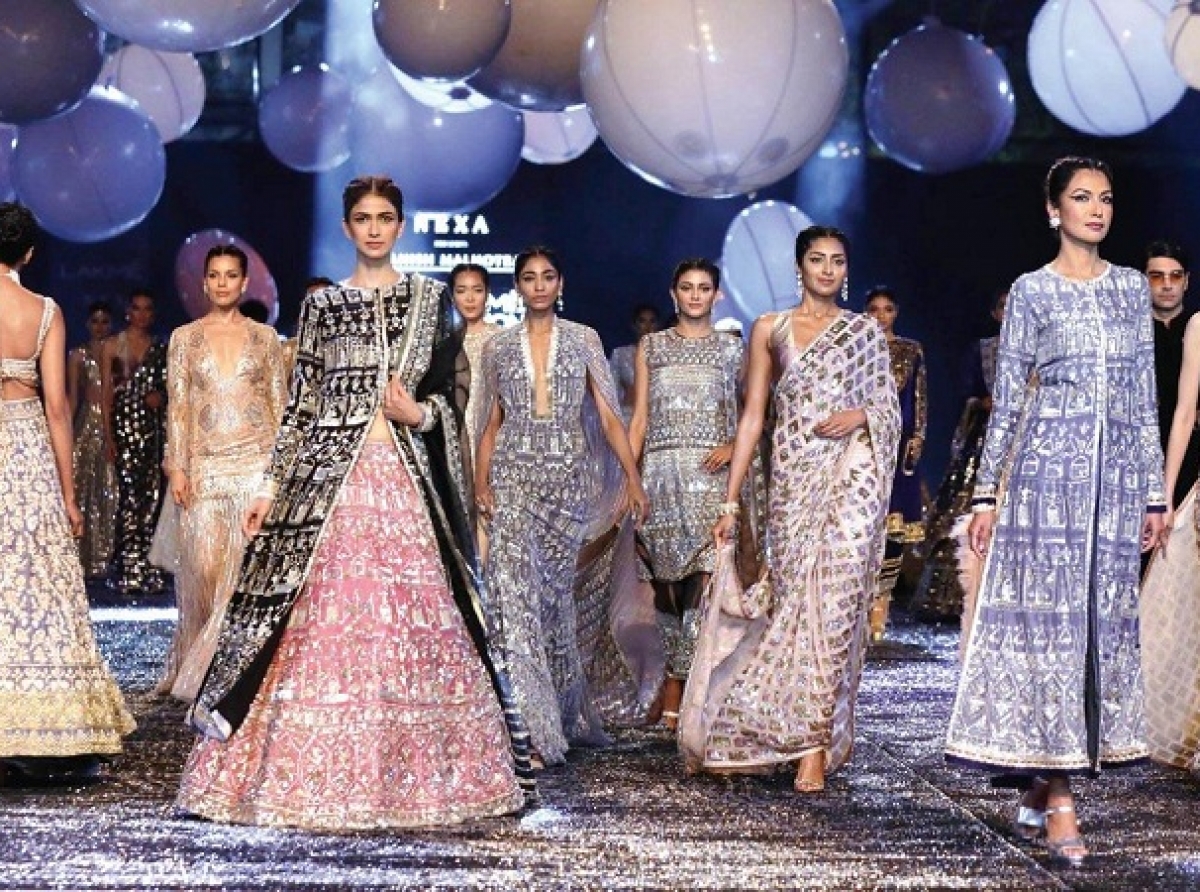The industry has to restart sooner or later, emphasized designer Payal Singhal at the recently concluded Lakme Fashion Week. For her, fashion weeks are a way to bring in new business to support her staff of 150. She organized a live, in-person show to launch Indian athleisure line called Kismet. The show featured mask-less models to a socially distanced audience seated in their respective cars.
Organized jointly by the Fashion Design Council of India and Rise Worldwide from March 16-21, 2021, Lakme Fashion Week showcased over 30 designers including Anamika Khanna, Ritu Kumar, Shantanu & Nikhil, Suneet Varma, Masaba Gupta, Huemn, Payal Pratap, Ruchika Sachdeva, Gauri & Nainika and Akshat Bansal. The event reemphasized the relevance of fashion weeks as the largest lifestyle property in terms of the quantum of business or investments and sponsorships, says Jaspreet Chandok, Head-Lifestyle Business, Rise Worldwide.
Mirroring current times
One of the highlights was the The Bodice show by designer Ruchika Sachdeva which mirrored the current troubled times with its long dresses and optical pleats. Designer Payal Pratap’s collection featured floral patterns against a dark background that celebrated the positivity in her consumers. Her collection included long skirts and dresses with longer jackets, their shape and silhouette tailored to follow the body contours.
The virtual shows by designers Anamika Khanna and PELLA by Priyanka Ella Lorena Lama celebrated the gloom surrounding current instability. However, they also highlighted the creativity emerging out of it.
Playing with the idea of evanescence, designer Khanna showcased a collection featuring dhoti drapes hemmed in flat metallic embroidery to armour-inspired version in scallop beads. Her tailored coats made with traditional materials and accentuated and a bomber jacket-meets-shrug pair reminded viewers of intricate Kutchi handwork.
Massa Gupta’s collection featured a range of knotted crop tops, cape blouses, dresses, and duets of saree-blouses and track pants-hooded jumpers drizzled over in a combination of signature prints; the holy cow, lipstick bullets, palm, toffee wrappers, etc. The collection was a compilation of old hits rehashed from familiar styles and trimmings.
Payal Singhal’s street-meets-sportswear collection focused on young and unpretentious styles. Made from fabrics recycled from PET bottles, courtesy R-Elan, the collection included dhoti-saris, kurta-jogger sets and ribbed crop top-jogger saris finished in a twist of thread and wool embroidery and the label’s characteristic tassel and pom-pom details.
Brand Heumn designing outwear for quite some time launched a collection of oversized sportswear crafted in homegrown cotton and silk with couture-level 3D embroidery, embossing that had a cool looseness and coarseness to it. T0he rise of work-from-home clothing trend pushed it to create more responsible range, says Pranav Misra.
Healthy growth prospects
A report by the Boston Consulting Group estimates, the Indian fashion industry will be worth Rs 5,781 billion by 2024, despite a 27 per cent drop in size in 2020. The industry is expected to drive many social changes, says Misra, Co-founder and Designer, Huemn. As the industry moves away from its normal mode of functioning, stakeholders need to reset rules to focus on telling stories that help reemphasize the importance of fashion.

























